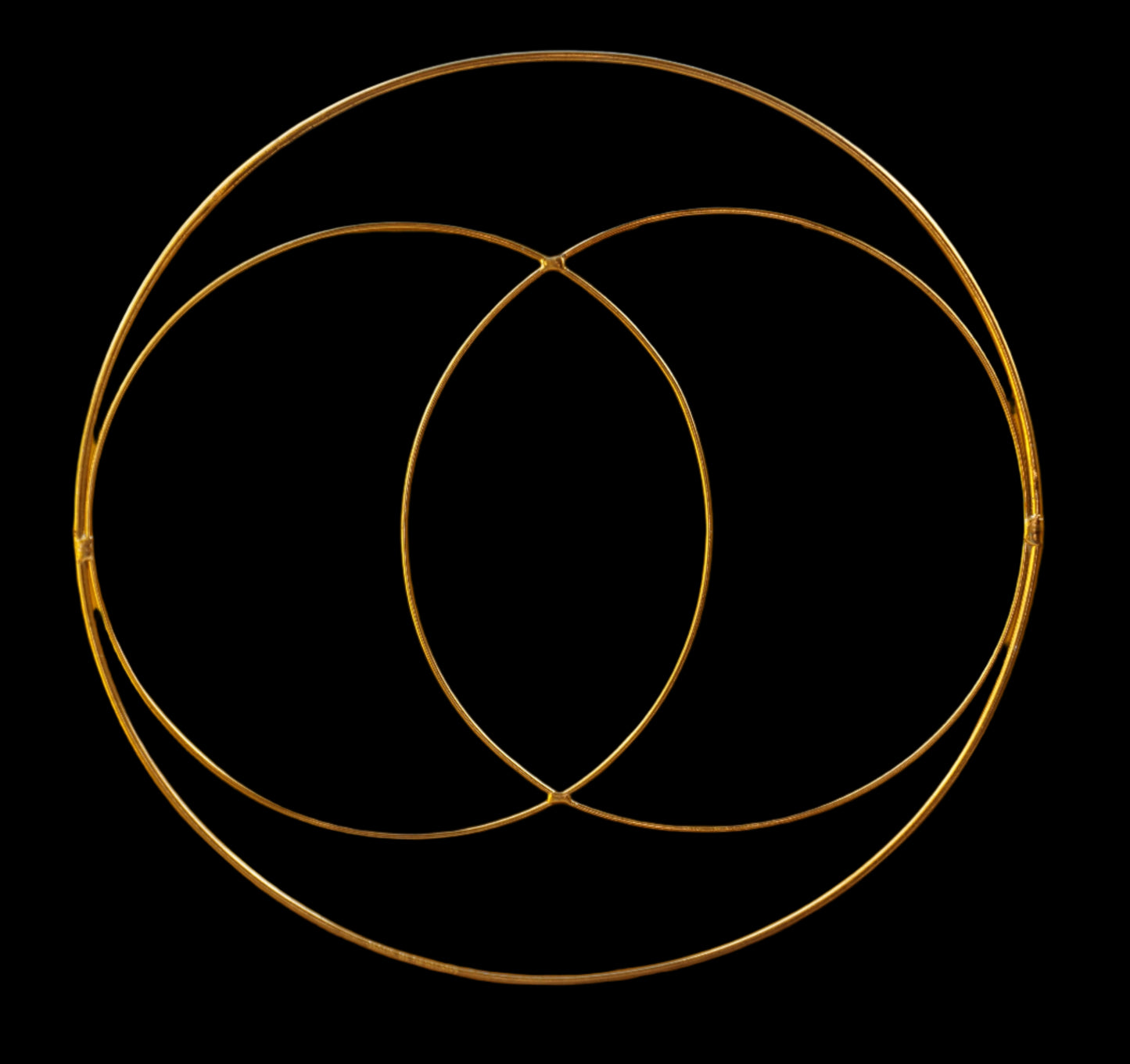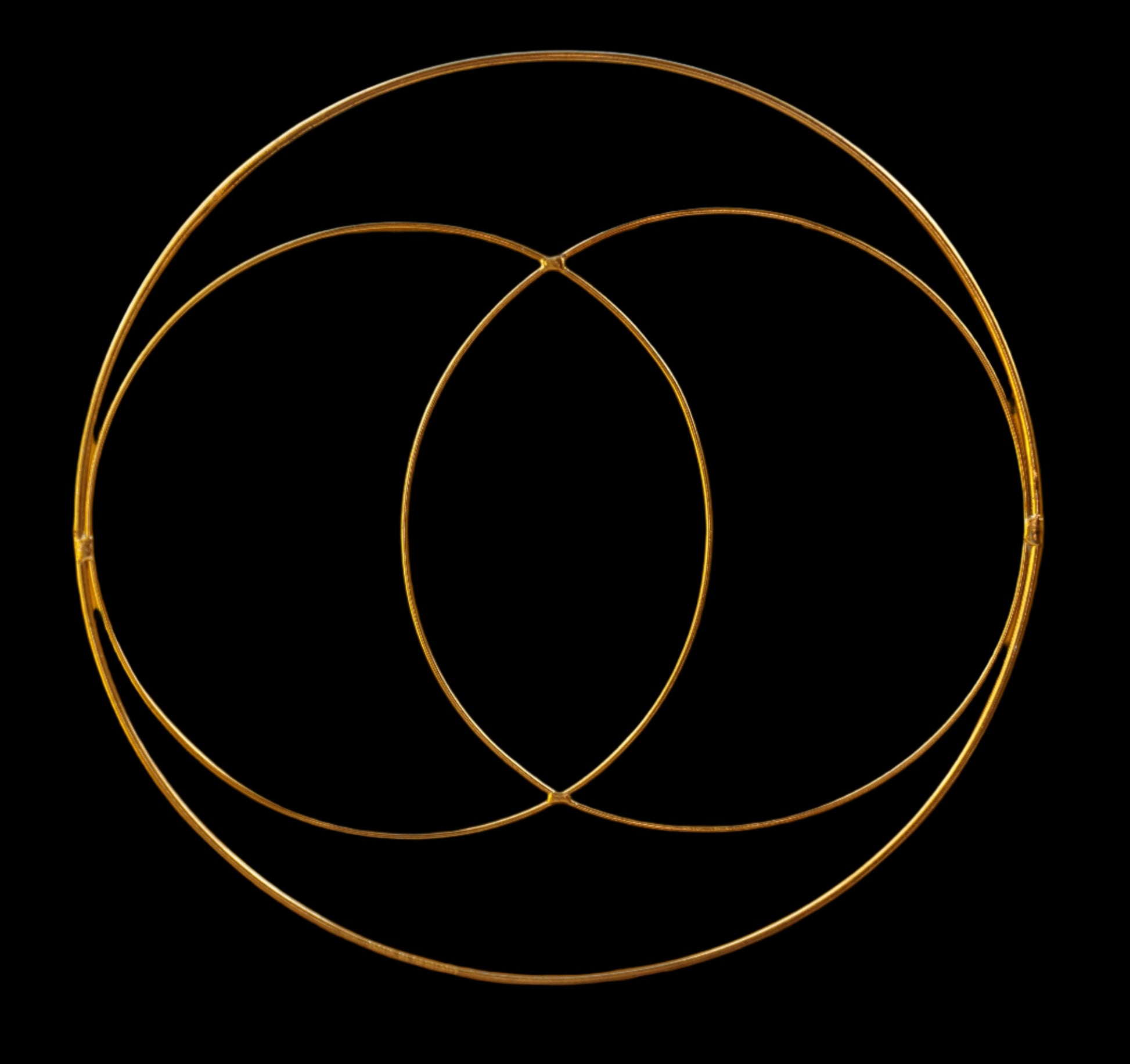Portal Glastonbury
Ref.MD0004 - Vesica Piscis, aka womb of Creation
Ref.MD0004 - Vesica Piscis, aka womb of Creation
Couldn't load pickup availability
Ref.MD0004 - Vesica Piscis, aka womb of Creation
The vesica piscis, a geometric shape formed by the intersection of two equal circles where each circle’s center lies on the other’s circumference, carries rich symbolic significance across cultures and traditions. Its almond-like form—pointed at both ends—emerges from a simple yet profound overlap, making it a cornerstone of sacred geometry with meanings tied to creation, unity, and balance.
Symbolic Significance
Union and Creation: The vesica piscis symbolizes the merging of two entities to birth something new. The space where the circles overlap represents a womb or portal—literally “vessel of the fish” in Latin—suggesting the origin of life, ideas, or consciousness. It’s the moment when duality (two circles) generates a third reality, embodying creativity and the spark of existence.
Duality in Harmony: The shape reflects a balance between opposites—two identical circles meeting without losing their individuality. This mirrors concepts like yin and yang, male and female, or earth and sky, suggesting that harmony arises not from sameness but from the interplay of distinct forces. It’s a symbol of reconciliation and coexistence.
Infinite Potential: Within the vesica piscis lies the foundation for other sacred shapes—like the equilateral triangle, square, and pentagon—hinting at its role as a seed for infinite geometric possibilities. Symbolically, this points to the potential within unity, where the meeting of two wholes unlocks endless growth or understanding.
Vision and Insight: Its resemblance to an eye (or fish bladder, historically) ties it to perception and awareness. In art and architecture, it’s often a frame for seeing—think stained-glass windows—suggesting a lens into deeper truths or the overlap between physical and spiritual realms.
Broader Contexts
Cultural Roots: It appears in ancient Egyptian art, Christian iconography (e.g., the fish symbol or Christ’s mandorla), and Celtic designs, often framing figures to signify their significance. In the Flower of Life, it’s the first step of expansion, linking it to cosmic order.
Mathematics and Nature: The shape’s proportions (√3 height-to-width ratio) echo natural patterns—like cellular division or light refraction—symbolizing the underlying math of existence.
Esoteric Meaning: In mysticism, it’s a gateway—some see it as the “eye of the universe” or a bridge between dimensions, reflecting the intersection of human and higher consciousness.
Its fish-like form inspired early Christian use (ichthys), but it also aligns with optical phenomena—two overlapping light circles create a vesica piscis in the eye’s perception, tying it to how we literally see the world.
In essence, the vesica piscis symbolizes creation from union, balanced duality, infinite potential, and insightful vision—a shape where two become more than the sum. Material: golden chromed brass
Material: golden chromed brass
Size: 250mm/9.84in approx.


